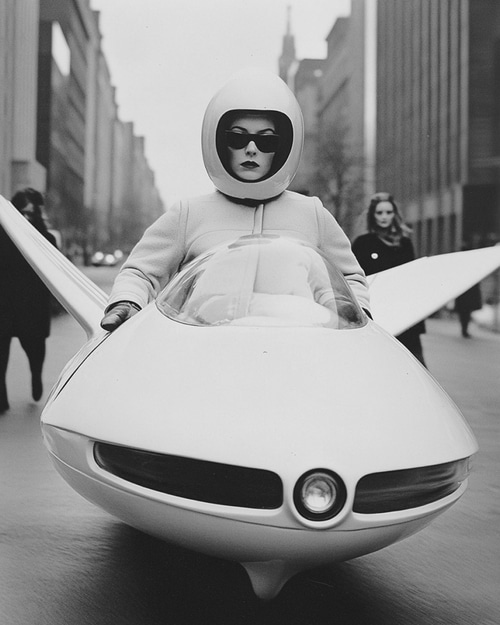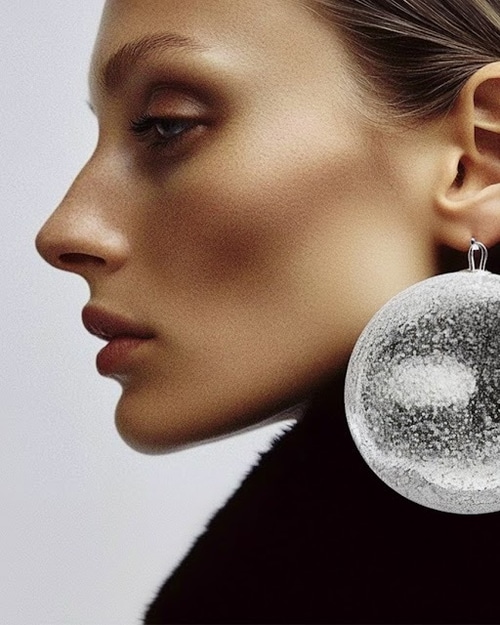

The Future of Wealth is Mobile
The topline...
• Embrace the rising mobile generation of UHNW consumers, globally and locally, meeting them where they are.
• Today the luxury industry is full of opportunities and bright spots – you just have to uncover where they are for your brand’s unique situation.
In the luxury industry today, there is a pervasive attitude that one part of the world alone can uniquely make or break your brand’s success. China most often shoulders this imposed responsibility – if China’s economic figures falter in any way, legions of commentators will swoop in to issue dire warnings about the fate of the entire luxury industry.
But we’ve been here – over and over we’ve been at this exact moment, with one major country’s economy entering a period of turbulence, and the luxury industry has continued to expand in new ways, time after time. Despite a myriad of warnings to the contrary, it’s worth reflecting that the luxury economy has consistently outperformed the non-luxury economy.
The oft-repeated truth today: 2% of consumers fuel 40% of sales in the global luxury industry. This ratio will only likely increase as the segments dedicated to aspirational purchasers lose steam. Increasingly, these Ultra High Net Worth Individuals are mobile, and not tied deeply down to any one place. Reaching these consumers takes incredible regional nuance but also a strong 360°, multifaceted global storytelling approach.
A wave of recent research tracks the ongoing fluctuations of these select millionaires. UBS reports that the UK would see a drop of nearly a fifth of its millionaires by 2028 – yet this isn’t because lots of people in the UK are suddenly going to lose all their money. Rather, it’s because increasingly, the ultra-wealthy have a plethora of options of where they might want to live.
The truth is that these wealthy individuals are often very sensitive to economic volatility and big policy changes – but not because suddenly they’ll be broke and refraining from top-tier art and luxury goods. Rather, the world we’re living in actively and increasingly encourages this type of flexibility to where you live.
The shiny allure of golden passports
Over the 21st century, we’ve seen an expeditious rise in so-called ‘golden visas’ and ‘golden passports.’ In this domain, Henley & Partners - The Firm of Global Citizens® are worldwide leaders, with sixty offices across the globe to aid wealthy people of all kinds to secure these bureaucratic golden tickets. On their website, they write that ‘acquiring a golden visa is the best possible insurance policy against economic and political risk in a volatile world.’ Some UHNWIs collect them much like they do timepieces – look at billionaire German-American investor Peter Thiel for instance, who famously acquired New Zealand citizenship and is now allegedly pursuing Malta citizenship, as well.
Are many more Emilys coming to Paris?
Beyond golden passports, the rise of mobile millionaires and ‘digital nomads’ of all kinds is set to only grow.
Donald Trump’s presidency (round two) is being analyzed by luxury professionals regarding his aggressive tariff strategies – which is of course fair to consider the implications of, particularly for China-made brands – but one policy has gone quite under the radar: the policy to remove double-taxation for Americans who live abroad.
The US currently requires citizens abroad to pay some amount of taxes back to the States for income above a designated threshold (about 120,000 euros in France). You could be an American by birth, but live your adult life in another country, consistently paying taxes. However, Trump quietly campaigned on removing this policy – if his administration proves successful, we could see in the coming years, yes, perhaps an increase in US-based millionaires, but also American millionaires abroad, and with it, a wave of luxury consumption that extends beyond the norms of tourism.
The outdated attitude that only one region is responsible for your brand’s success is what leads to the rushed marketing gimmicks that fail every single year in China around Lunar New Year, where brands routinely slap on that year’s given Zodiac animal onto their products and think that alone should garner a stream of purchases. Really, it’s better to treat marketing for this incredibly important and meaningful holiday with all the care and nuance your brand would treat any other campaign, wherever in the world it happens to be released or for whatever occasion.
The boom of luxury in new regions
In the near future, expect to see increasing talk of the booming economies of India, the Gulf countries, and Southeast Asian countries – and the mobile millionaires they produce.
Across India, but particularly in regions like Uttar Pradesh and cities like Mumbai, millionaires will see an astounding influx of wealth. Goldman Sachs estimates that by 2027, 100 million people will be considered affluent, nearly double the figure of 2023. In the Gulf, the luxury goods markets will reach a combined 13.7 billion dollars by 2028, up a cool three billion from the figure today.
Over in Southeast Asia, projections are even more jaw-dropping: Taiwan is expected to see a 47% increase in millionaires thanks to the booming microchip industry. In Thailand, we’re already seeing luxury brands adapt to the country’s escalating luxury appetites – just look at the mega Louis Vuitton concept store unveiled this year in Bangkok.
In the future, luxury will need to be everywhere, all at once - while remaining completely themselves
Recently we came across a striking quote from the Argentine writer Mariana Enríquez, describing a wealthy character in her last novel: “Living in Argentina didn’t take away from her importance: money is a nation in itself.” Brands are increasingly paying attention to consumers also who live outside a typical ‘hotspot’ – Burberry, for instance, just released a fantastic holiday clip spotlighting two mega fans of their brand from Nebraska, a US state quite far from the more wealthy coasts.
These highly discerning, highly affluent consumers are powering strong growth across brands like Bottega Veneta, Brunello Cucinelli, Miu Miu, and Zegna.
Brands will continue to adapt and be agile to this new truth of marketing and creating luxury products. Take a look at Audemars Piguet, for example. New CEO Ilaria Resta made a point of telling Fortune that “Audemars Piguet watches are absolutely politically neutral. We are on the wrists of all kinds of people.” Lines between gender, between countries, between ages – these lines have blurred extraordinarily, requiring a deeply nuanced approach to navigate this new world. “Owning a watch brings people together,” Resta says.
To put it mostly simply: in the future, luxury will need to be everywhere, all at once while remaining boldly, creatively and thoroughly themselves.




